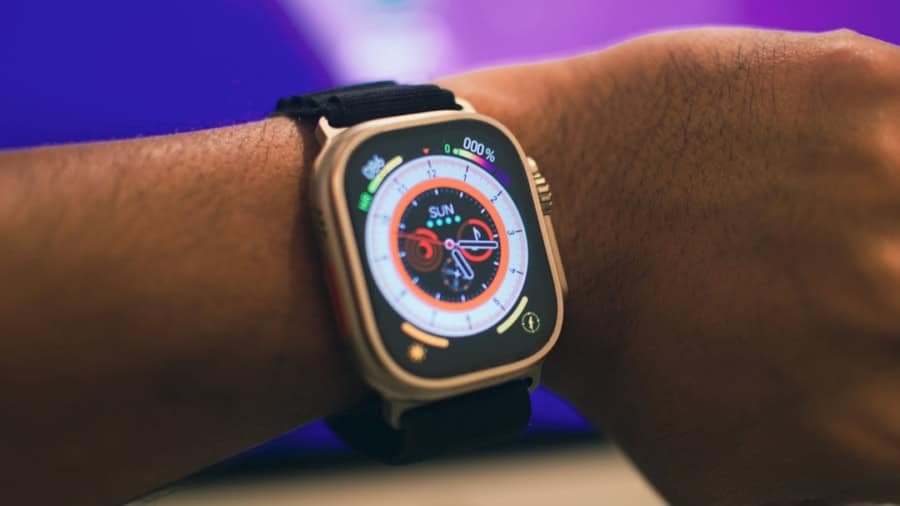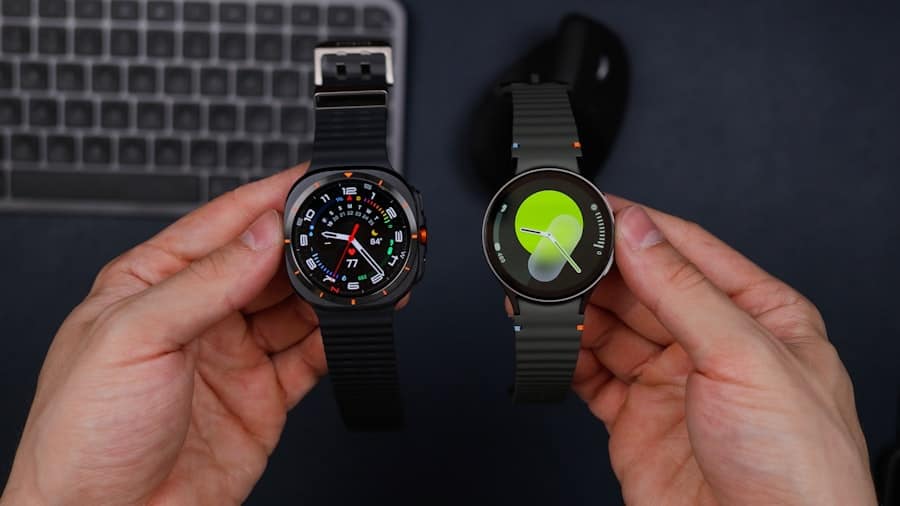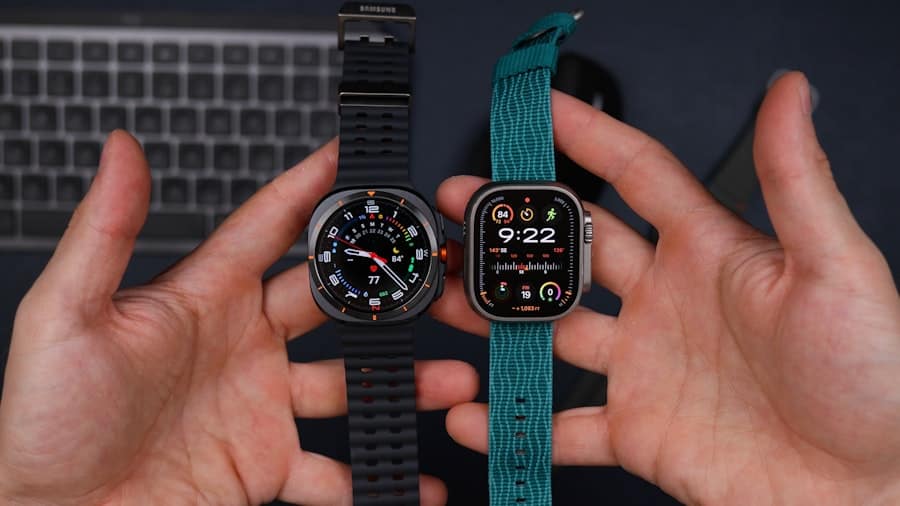In the rapidly evolving landscape of wearable technology, the significance of all-day battery life cannot be overstated. As consumers increasingly rely on devices such as smartwatches, fitness trackers, and augmented reality glasses, the expectation for these gadgets to operate continuously throughout the day has become a standard. The convenience of not having to recharge devices multiple times daily enhances the overall user experience, allowing individuals to seamlessly integrate technology into their daily routines without interruption.
This expectation is particularly pronounced in a world where users are accustomed to instant access to information and functionality. Moreover, all-day battery life is crucial for maintaining the reliability of wearables in various scenarios. For instance, fitness enthusiasts depend on their devices to track workouts, monitor heart rates, and provide real-time feedback during exercise sessions.
If a device runs out of battery mid-workout, it not only disrupts the user’s experience but also compromises the accuracy of data collection. Similarly, for professionals who utilize smartwatches for notifications and communication, a device that requires frequent charging can lead to missed messages or calls, ultimately affecting productivity. Thus, all-day battery life is not merely a feature; it is an essential component that underpins the functionality and reliability of wearable technology.
Key Takeaways
- All-day battery life in wearables is crucial for uninterrupted usage and convenience.
- Enhanced user experience with all-day battery life includes seamless tracking and monitoring throughout the day.
- All-day battery life enables continuous health and fitness tracking, providing more accurate data for users.
- Challenges in achieving all-day battery life include balancing power consumption with device functionality.
- Innovations in battery technology for wearables aim to improve energy efficiency and extend battery life.
How All-Day Battery Life Enhances User Experience
The user experience is significantly enhanced by the presence of all-day battery life in wearables. When users can rely on their devices to last throughout the day without needing a recharge, it fosters a sense of freedom and flexibility. This is particularly important for individuals who lead busy lives, as they can engage with their wearables without the constant worry of battery depletion.
For example, a commuter can use their smartwatch for navigation, receive notifications, and track their fitness during their daily routine without having to pause and recharge. This uninterrupted usage contributes to a more fluid interaction with technology. Additionally, all-day battery life allows for more extensive data collection and analysis.
Wearables that can operate continuously provide users with a wealth of information about their health and activity levels over extended periods. This continuous monitoring can lead to better insights into personal habits and trends, enabling users to make informed decisions about their health and lifestyle. For instance, a sleep tracker that operates throughout the night and into the next day can provide comprehensive data on sleep patterns, helping users identify areas for improvement.
The ability to gather such data without interruption enhances the overall value of wearables, making them indispensable tools for personal health management.
The Impact of All-Day Battery Life on Health and Fitness Tracking
All-day battery life plays a pivotal role in the effectiveness of health and fitness tracking wearables. These devices are designed to monitor various metrics such as heart rate, steps taken, calories burned, and even sleep quality. When a wearable can function continuously without requiring frequent recharges, it ensures that users receive accurate and consistent data throughout their activities.
For instance, a fitness tracker worn during a long hike or an intense workout session can provide real-time feedback on performance metrics, which is invaluable for athletes looking to optimize their training regimens. Furthermore, the ability to track health metrics over extended periods allows for more comprehensive health assessments. Continuous monitoring can reveal trends that might not be apparent with sporadic data collection.
For example, a smartwatch that tracks heart rate variability throughout the day can help users identify stress patterns or potential health issues before they escalate. This proactive approach to health management is made possible by devices that boast all-day battery life, as they can gather data continuously without interruption. Consequently, users are empowered to take charge of their health in ways that were previously unattainable with less reliable devices.
Challenges in Achieving All-Day Battery Life in Wearables
Despite the clear advantages of all-day battery life in wearables, achieving this goal presents several challenges for manufacturers. One of the primary obstacles is the inherent trade-off between device functionality and battery capacity. As wearables become more advanced with features such as GPS tracking, heart rate monitoring, and connectivity options like Bluetooth and Wi-Fi, they require more power to operate effectively.
This increased demand for energy often leads to shorter battery life unless manufacturers find innovative ways to optimize power consumption. Another significant challenge lies in the physical constraints of wearable design. Unlike smartphones or tablets that have more space for larger batteries, wearables must be compact and lightweight to ensure comfort during prolonged use.
This limitation necessitates the development of smaller batteries that can still deliver sufficient power for all-day operation. Additionally, advancements in display technology—such as high-resolution screens—can further drain battery life. Manufacturers must strike a delicate balance between incorporating cutting-edge features while ensuring that these enhancements do not compromise battery longevity.
Innovations in Battery Technology for Wearables
To address the challenges associated with achieving all-day battery life in wearables, researchers and manufacturers are exploring various innovations in battery technology. One promising avenue is the development of solid-state batteries, which offer higher energy density compared to traditional lithium-ion batteries. Solid-state batteries utilize solid electrolytes instead of liquid ones, resulting in improved safety and longevity while potentially allowing for smaller form factors suitable for wearables.
Another area of innovation involves energy harvesting technologies that enable wearables to generate power from their environment. For instance, some devices are being designed to harness kinetic energy from user movements or ambient light through solar cells. This approach not only extends battery life but also reduces reliance on traditional charging methods.
Additionally, advancements in low-power components and energy-efficient software algorithms are crucial in optimizing power consumption within wearables. By minimizing energy usage during idle times or when certain features are not in use, manufacturers can significantly enhance battery longevity.
Strategies for Conserving Battery Life in Wearables
In addition to technological innovations, there are several strategies that users can employ to conserve battery life in their wearables. One effective method is adjusting settings related to connectivity features such as Bluetooth and Wi-Fi. By disabling these features when they are not needed or using airplane mode during periods of inactivity, users can significantly reduce power consumption.
Furthermore, limiting notifications or customizing which apps can send alerts can also help extend battery life by minimizing background activity. Another practical approach involves managing display settings. Many wearables come equipped with customizable brightness levels and screen timeout options.
Reducing screen brightness or setting shorter timeout durations can lead to substantial energy savings over time. Additionally, utilizing power-saving modes available on many devices can help prolong battery life by automatically adjusting performance settings based on usage patterns. By being proactive about these adjustments, users can maximize the longevity of their wearables throughout the day.
The Future of All-Day Battery Life in Wearables
Looking ahead, the future of all-day battery life in wearables appears promising as advancements in technology continue to unfold. The integration of artificial intelligence (AI) into wearable devices may play a significant role in optimizing battery performance. AI algorithms can analyze user behavior patterns and adjust device settings dynamically to conserve energy while maintaining functionality.
For example, a smartwatch could learn when a user typically engages with notifications and adjust its power settings accordingly during periods of inactivity. Moreover, as research into alternative energy sources progresses, we may see wearables that utilize bioenergy harvesting techniques—such as converting body heat or sweat into usable power—becoming more prevalent. This could revolutionize how we think about charging wearables altogether, allowing them to operate indefinitely without traditional charging methods.
As manufacturers continue to prioritize sustainability alongside performance, we may witness a shift toward eco-friendly materials and production processes that further enhance the appeal of wearables with all-day battery life.
Considerations for Consumers When Choosing Wearables with All-Day Battery Life
When selecting wearables with all-day battery life, consumers should consider several factors beyond just battery longevity. First and foremost is understanding individual usage patterns; different users have varying needs based on their lifestyles and activities. For instance, an athlete may prioritize GPS accuracy and heart rate monitoring over other features, while a casual user might focus on notifications and basic fitness tracking.
Additionally, consumers should evaluate the overall ecosystem surrounding the wearable device. Compatibility with smartphones and other devices is crucial for maximizing functionality; therefore, ensuring seamless integration with existing technology is essential. Furthermore, examining user reviews and expert opinions regarding real-world battery performance can provide valuable insights into how well a device meets its advertised claims regarding battery life.
By taking these considerations into account, consumers can make informed decisions when choosing wearables that align with their needs while ensuring they benefit from all-day battery life.
In a recent article discussing the importance of all-day battery life in modern wearables, it is interesting to note the possibilities that can be unlocked with the Samsung Galaxy S22. The Samsung Galaxy S22 offers impressive battery life, making it a great option for those who rely on their devices throughout the day. Additionally, for musicians looking for the best tablet to display on-stage lyrics, the article on the best tablet for on-stage lyrics provides valuable insights. Furthermore, for those interested in smartwatches, the review of Xiaomi smartwatches in the article Smartwatches Xiaomi Review offers a comprehensive look at the features and capabilities of these devices.
FAQs
What is all-day battery life in wearables?
All-day battery life in wearables refers to the ability of a wearable device, such as a smartwatch or fitness tracker, to last an entire day on a single charge under normal usage conditions.
Why is all-day battery life important in modern wearables?
All-day battery life is important in modern wearables because it allows users to wear their devices throughout the day without having to constantly recharge them. This enhances the convenience and usability of the devices.
How does all-day battery life impact the user experience of wearables?
All-day battery life positively impacts the user experience of wearables by reducing the need for frequent charging, allowing users to track their activities, receive notifications, and access other features throughout the day without interruption.
What are some factors that affect the battery life of wearables?
Factors that affect the battery life of wearables include the type of display used, the processing power of the device, the intensity and frequency of usage, and the efficiency of the software and hardware components.
What are some strategies for improving the battery life of wearables?
Strategies for improving the battery life of wearables include optimizing software and hardware components for energy efficiency, using low-power display technologies, implementing power-saving modes, and developing more advanced battery technologies.



